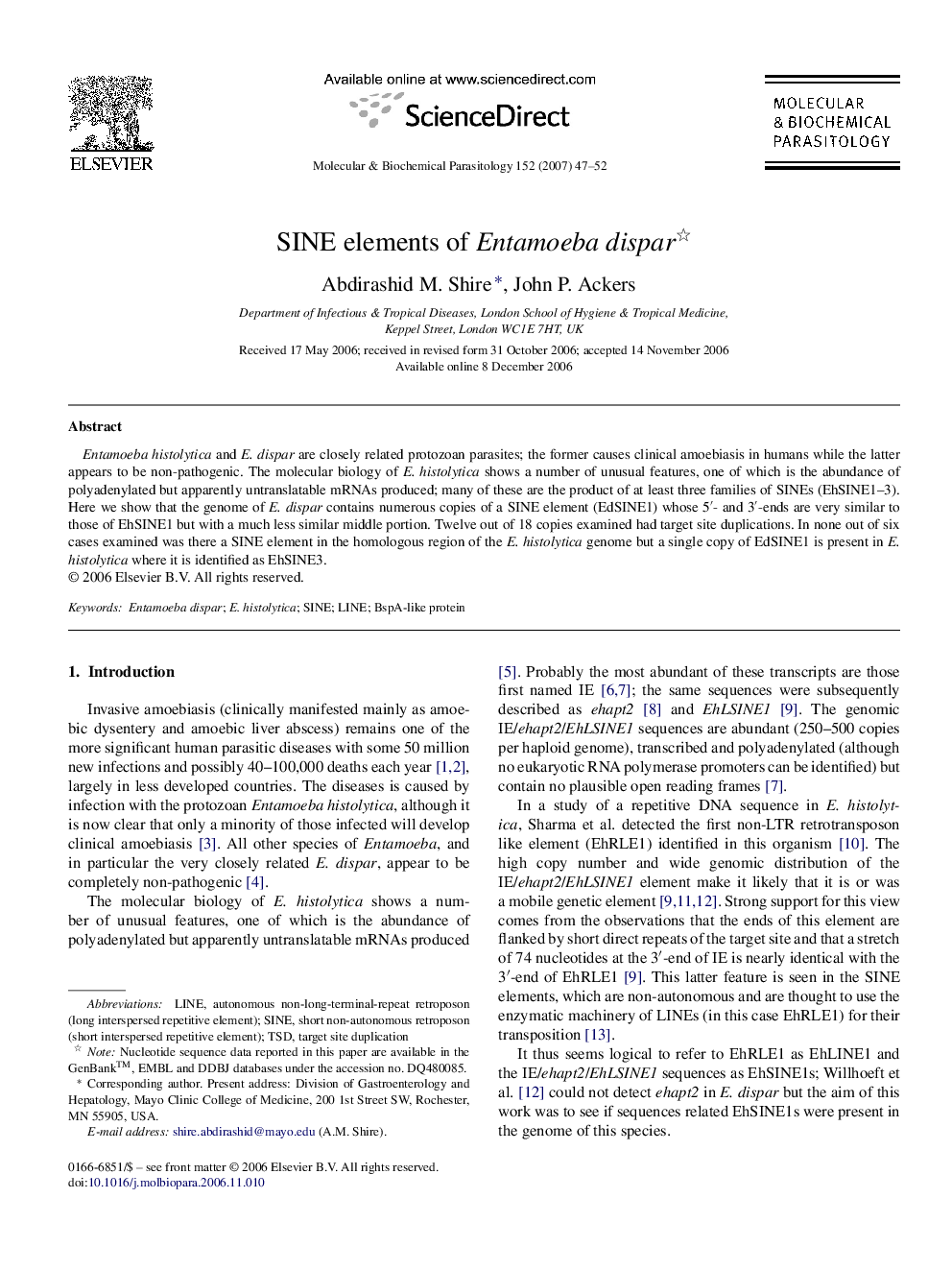| Article ID | Journal | Published Year | Pages | File Type |
|---|---|---|---|---|
| 5916193 | Molecular and Biochemical Parasitology | 2007 | 6 Pages |
Abstract
Entamoeba histolytica and E. dispar are closely related protozoan parasites; the former causes clinical amoebiasis in humans while the latter appears to be non-pathogenic. The molecular biology of E. histolytica shows a number of unusual features, one of which is the abundance of polyadenylated but apparently untranslatable mRNAs produced; many of these are the product of at least three families of SINEs (EhSINE1-3). Here we show that the genome of E. dispar contains numerous copies of a SINE element (EdSINE1) whose 5â²- and 3â²-ends are very similar to those of EhSINE1 but with a much less similar middle portion. Twelve out of 18 copies examined had target site duplications. In none out of six cases examined was there a SINE element in the homologous region of the E. histolytica genome but a single copy of EdSINE1 is present in E. histolytica where it is identified as EhSINE3.
Related Topics
Life Sciences
Biochemistry, Genetics and Molecular Biology
Molecular Biology
Authors
Abdirashid M. Shire, John P. Ackers,
